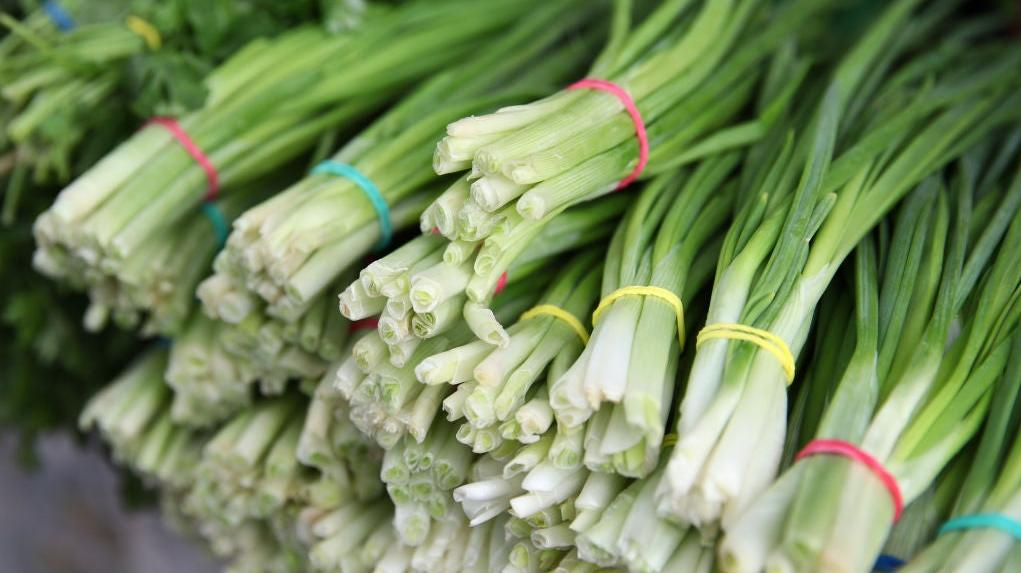The Best Way To Store Scallions And Keep Them Fresh
Maybe you, too, are watching plants in your herb garden die off one by one?
In early May I planted 180 individual scallions in my small backyard herb garden, because that's the sort of thing that can happen when you tell your husband to order you "a few bunches" without being specific. I'm pleased to report that nearly three months later, all but ten of these scallions are dead, thanks to a series of violent hailstorms that deemed my scallions too beautiful for this world. They have joined my basil, thyme, and beloved blackberry bush in plant heaven.
I am tending to my surviving scallions as well as I can, feeding them delicious water and singing them sweet lullabies that will hopefully inspire them to hang tight to this mortal coil. The thing is, I cook with a lot of scallions, and after I snip off their tasty green heads, they take a while to grow back. And so I'm back to buying store-bought scallions, and though they are destined to die, I do my best to keep them in pristine condition before they head to the grave of my gullet.
Tips for choosing the best scallions
The first step to keeping scallions fresh in your kitchen is to make sure you're bringing home firm, vividly green specimens in the first place. At the grocery store or farmers market, look for ones that are strong and sturdy, with bulbs that don't bend or wilt under gentle pressure. The stalks should be green, and should not feel flaccid or papery. Overall, the scallions should not feel excessively wet or slimy, nor should they be dry, wrinkled, or appear as if the layers are peeling away from each other.
How to keep store-bought scallions fresh
When you get your scallions home, remove any excess packaging and rinse well. Trim off the roots and set aside. Trim any rough parts off the top of the green ends, then cut them in half where the white bulb turns into green stalks.
Next, double up a paper towel, run it briefly under cold water, then wring out as much as you can until the towels are just barely damp. Lay the scallion whites out in the middle of the paper towel, then roll up loosely and place in an airtight plastic container or ziptop bag. Repeat the process with two more paper towels and the scallion greens, and store in the same bag. When refrigerated, the damp paper towels will provide enough humidity for the scallions to remain crisp and fresh-tasting, while also absorbing any excess moisture that would cause the scallions to become slimy and rotten.
How to use scallion roots
If you're not anticipating any violent hailstorms, heat domes, and/or fire tornadoes in your area, or if you can grow plants indoors, you might want to try planting the roots instead of tossing them in the trash. Plant the roots about 1" down in a small pot of soil, or put them in a glass filled with about ½" of water, then place them where they can get at least eight hours of sunshine and hope for the best. Maybe they'll grow and thrive. Or maybe they won't, and you'll have to go buy another few bags of scallions. Either way, you've got some delicious meals in your future.
